Interview with Rachelle M.M. Adams

Rachelle M.M. Adams is an assistant professor at the Ohio State University in Columbus. She works on fungus growing ant symbioses, ant evolution, and behavioral and chemical ecology, and she is also broadly interested in ant parasites, venom evolution, and the genus Megalomyrmex. In this interview, we talk about her career, her allergy to honey bees, and her love for Megalomyrmex ants.
An Interview compiled by Patrick Krapf
MNB: Dear Dr. Adams, thank you so much for taking the time to give an interview. How are you?
RMMA: It’s a pleasure. Thank you so much for contacting me. I’m fine, thank you. How are you?
MNB: I’m doing good, thank you. If it’s alright with you, let us start with an easy question. Could you tell us a bit about yourself?
RMMA: I’m an assistant professor at the Ohio State University. I received my PhD at the University of Texas in Austin with Ulrich Mueller and Mike Ryan as my co-advisors, and my undergraduate degree is from the University in Montana. I’m interested in the evolution of social parasitism, specifically in the genus Megalomyrmex. I think a lot about how traits evolve in symbiotic species interactions. So the systems I study mainly involve a fungus-growing ant species network and most often, a Megalomyrmex social parasite species.
MNB: That is so interesting. Tying into this, I recently had a look at your homepage, which is really informative, by the way, and you list so many topics you are pursuing. Could you tell us a little bit about this research?
RMMA: Sure, and thank you. I currently work with four graduate students, and the research we are doing right now is focused mainly on their research interests. I have two graduate students who are interested in population genomics questions. They are researching two different fungus-growing ant species and their associates. Matt Boot is studying a guest ant social parasite and Cody Cardenas is studying six parasitoid wasp species. I am also co-advising a graduate student from the Museu Paraense Emílio Goeldi in Brazil. Lívia Pires do Prado is revising the Megalomyrmex genus using morphological and molecular techniques. She will use ancestral character state reconstruction to study the evolution of queen winglessness. Finally, my most recent graduate student, Victoria Ramsey, is interested in the transmission of microbes in the fungus-growing ant species network. Specifically, she is addressing which microbes are transmitted by queens. The queens will start their nest with a small bit of fungus garden and transmit a complex of microbes in addition to those found in and on ant bodies.
MNB: Oh wow, that sounds so interesting. Do these “new” nidal gardens differ from the gardens they come from?
RMMA: We are finding that there is a similarity between the fungal pellets and the natal garden. Questions that remain involve determining which of these microbes are transients or have symbiotic relationships with the ants. Eventually, we will examine how the Megalomyrmex social parasites influence this microbial community. They have venom with antimicrobial properties. Although each student has different interests, all of these projects relate to questions about Megalomyrmex parasites or the evolution of fungus-growing ant traits.
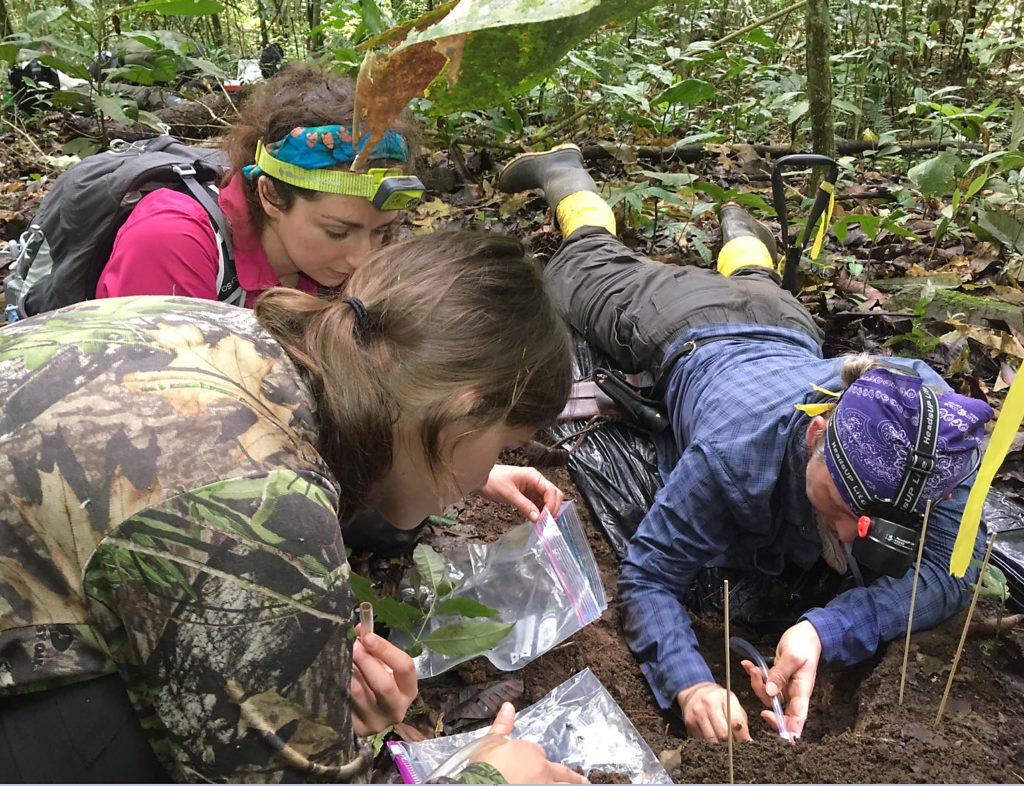
MNB: Wow, those are so many interesting topics. And now back to you, how did you end up studying ants?
RMMA: As an undergraduate student, I began studying honey bees and their parasites. I was fascinated by the social structure of the colony. When I developed an allergy, I began studying bumblebees and sweat bees. Following my undergraduate degree at The University of Montana, I moved to the Washington DC and became a technician for Ulrich Mueller at the University of Maryland and Ted Schultz at the Smithsonian Natural History Museum. This is when I shifted to ants. The fungus-growing ants have such a rich natural history and prompt so many fascinating questions. I was immediately enamored. When Ulrich brought back a Megalomyrmex social parasite from Panama, I was hooked!
MNB: What is your motivation for doing ant research now? You got hooked on the Megalomyrmex genus, and is it also driving you on now?
RMMA: I think it really does come down to my love for and fascination with Megalomyrmex. Many broad questions relating to symbiotic relationships in general, come from questions that I have about Megalomyrmex species. For example, I am fascinated by the evolution of social parasitism, queen winglessness, ant semiochemicals (including venom), and anything that relates to the co-evolution between host and parasites. I have these questions, but what motivates me most are the students that I work with that share my excitement to push the research forward.
MNB: What was the biggest obstacle you had to overcome in ant research?
RMMA: What immediately comes to my mind is getting my job (laughing). When I think about obstacles in research, I imagine situations where you are forced to shift to a different question due to a lack of funding and resources or support from your advisor. My allergy to honeybees was devastating but then opened my eyes to other opportunities. Hurdles can be jarring at first but I think with creativity and motivation you can always find a benefit to these initial obstacles. Now that I have a job, my biggest concerns are around getting grants. This is my next major obstacle that will limit my work.
MNB: And during your research, what was the funniest moment?
RMMA: So you mean a funny situation? When I was PhD student, I was working in Peru. I was at an ecolodge, and they happen to have a very tame tapir named Martha. I was doing my research on my own as was often the case and one day Martha came with me. As I stopped to look for ants, Martha stopped and grazed, and when I moved on, she would move on, too (laughing).
MNB: So this day, you had friendly company?
RMMA: I did (laughing).
MNB: And were there any irritating or scary moments you would like to share?
RMMA: Irritating moments in the field are always when I think I have found a Megalomyrmex, and I pick it up and it is a Pheidole (laughing).
MNB: Since we are talking about collecting ants. Which places do you go to for doing your research?
RMMA: Right now, our work is focused on Panama. We are based at the Smithsonian Tropical Research Institute working in the canal region. We will probably branch out to Costa Rica too. There are great species at La Selva Biological Station. My Brazilian PhD student focuses her collections in Brazil. I love that I get to go to South America again! I will try to join her as much as possible.
MNB: Oh wow, I would definitely do the same. And thinking about your work, what do you enjoy most about ant research? You mentioned before that working with students gives you motivation. Is working with students also one thing you enjoy about your work?
RMMA: Yes, definitely! As a PhD student, I was very fortunate to have many undergraduate researchers help with my dissertation. As a postdoc, I did not have as many opportunities to mentor students. I really felt something lacking when I was working in my postdoc positions. I’m fortunate now to have a very full lab. Last semester, I had ten students, this semester I have eight. I have an amazing group of students to work with! This is definitely a rewarding part of my work.
MNB: Was there any special person who inspired you to pursue a career in myrmecology?
RMMA: Ulrich Mueller and Ted Schultz. As an undergraduate, I didn’t think that I would ever move away from bee research. Both Ted and Ulrich were and are still wonderful mentors and very inspiring.
MNB: And that you didn’t have any allergies to ants?!
RMMA: Yes, exactly (laughing).
MNB: If you had not become a myrmecologist, and you wouldn’t have worked on honey bees anymore, what would you have liked to become?
RMMA: Oh no, honey bees would have been my answer (laughing). Okay, so beyond social insects? That is a tough one. In my career as an undergraduate, I hit several life changing crossroads. For example, I was offered two work-study positions at the same time. The first was in a botany lab where I would have been paid to count seeds. My high school jobs were always in horticulture so I was logically drawn to botany. The second position was to count trachea mites in honey bees. Luckily, honey bee parasites sounded a lot more interesting to me at the time. I love to garden and always enjoyed observing insect-plant interactions in my gardens. So perhaps, I would have become a botanist, I don’t know (laughing).
MNB: And maybe from there, you would have eventually shifted to ants?!
RMMA: Yes, I think my interests would have led me to social insects. I have always loved watching animals. So I think, I would have inevitably shifted away from focusing only on plants (laughing).
MNB: In ants, do you have a favorite morphological structure / myrmecological phenomenon, which fascinates you?
RMMA: Social parasitism, without any doubt.
MNB: Is there any particular situation in which you typically have the crucial idea for solving a difficult problem?
RMMA: I think the most challenging problems are those that have a major impact and are linked with career advancement. For example, coming up with grant ideas with multiple aims or deciding how to frame your conclusions of a paper you are writing. Solutions often come to me when I least expect them. When riding a bus or gardening or after spending time with family or working out. They come at quiet moments or after I have had a break. I believe having downtime is an important part of the scientific process. Sometimes it is more productive to stop thinking about the problem and just let ideas come to the surface. This is one reason I think parents in academia thrive. Kids force you to stop, relax, rest or run. Finding that balance in life is not only good for your overall health but critical to solving tough problems.
MNB: If you look back now to the time you started as a researcher, what are the main differences regarding research in myrmecology?
RMMA: Molecular technology has definitely shifted in a crazy dramatic way. I started as an undergraduate working with microsatellites on acrylamide slab gels. As a technician, I shifted to running capillary sequencers. Now we just send samples out for NGS. Technology is changing so fast it can be hard to keep up. It’s exciting though: the possibilities now are unbelievable. I really like to do my work efficiently, and with these major advances, I can.
MNB: Especially now I think it’s also the possibility to combine behavioral studies with genomic approaches. So combining those two I think is exciting and is one of the main advantages of NGS.
RMMA: Yes, definitely.
MNB: And what do you think will be hot topics in ant research in the next ten years?
RMMA: What you just said would have been my exact answer to that question (laughing). Understanding the genetic underpinnings of chemical communication and behavior. Technology used in chemical ecology and genomics is advancing so quickly. My hope is that I can be among the scientists to integrate these fields to better understand the complexities of ant behavior. I think it is a really exciting time right now.

MNB: So true. Do you have any suggestion for myrmecology newbies?
RMMA: Join IUSSI (laughing). When I was an undergraduate, my first conference was an IUSSI North America section break out meeting. I presented a poster and this led to my technician job. I think the friendly IUSSI community encourages the development of great scientists. We are all sharing our love of social insects and understand the passion behind this. I think that students should take advantage of this society, become a member, go to conferences, network, and find collaborations.
MNB: That is a good suggestion. Slightly different topic now. The higher the career level, the fewer women, also in ant research – what do you think will be most important for achieving gender equality in this respect?
RMMA: I think that we have many exceptional women in myrmecology right now. I think that we need to collaborate more. Women should get together, write big grants and support each other. Anyone in the academic realm, male or female, should be mentoring the amazing women that are coming up in our ranks. Make them part of your team or at least help them find collaborations. Just like many work environments, myrmecologists have a water cooler problem. Building a network is key to a successful career and I think that our cultural biases impede women from making these connections. Inviting more women to give departmental seminars is one way to help with this. Mentoring relationships and collaborations will encourage female researchers to stay in our field.
MNB: And become even more present, which is really important.
RMMA: Yes. I mentioned that Ted and Ulrich were really wonderful mentors. It doesn’t have to be women mentoring women, but really taking care of those that are in the field now and building them up. Helping them to cope with the frustrations of being a woman in science.
MNB: Does your group harbor students or postdocs with kids?
RMMA: Not yet, but I always tell my personal story to graduate students. I had my daughter when I was a graduate student. She traveled to New Zealand before she was three months old so that I could attend an Evolution conference. She has been to Panama many times and lived in Denmark for 6 years. I think sharing how career paths differ is important. Certainly, I would encourage anyone if they wished to have kids.
MNB: Would you do something different if you could start all over again?
RMMA: So my first thought is nothing, but maybe I could have published faster (laughing). With that being said, I think I did the very best I could, as everyone does. We all have unique challenges; there are always barriers and life choices that influence how your career moves. I have a dream job that I love and worked toward my entire life. No regrets, I wouldn’t change anything, because I did okay.
MNB: Are there any questions or is there a particular question that you get asked most often when people hear you work with ants?
RMMA: Always how to get them out of the kitchen. I never give them good advice. I say: ‘You know, the reason ants have these very persistent trails is because they have this amazing chemical communication system. So if you want to really mess with them, you can disrupt that trail by wiping it with some alcohol and seeing where else they go’. I never give them killing tips, only ways to play with their ants.
MNB: So I guess you are not protecting your kitchen against ants (laughing)?
RMMA: I would say my husband will disagree with my attitude about ants in the house. I do not kill the insects in the house. What he does, I cannot control (laughing).

MNB: What is the book on your bedside table?
RMMA: To be honest, I don’t read for pleasure at all. I listen to books because I can do that and garden at the same time. On my bedside is “Lab girl”, but I did not read it. I listened to it on tape.
MNB: Watching sports or doing sports?
RMMA: Definitely doing sports.
MNB: Listening to music or playing an instrument?
RMMA: Listening.
MNB: Are you an evening or morning person?
RMMA: Definitely morning person.
MNB: Tea or coffee?
RMMA: Lots of coffee.
MNB: Sugar or sweetener?
RMMA: Sugar, never sweetener.
MNB: Cooking yourself or going out to have dinner?
RMMA: Mostly eating out… I would like to cook more.
MNB: Habit or change, what do you prefer?
RMMA: Oh that is interesting. If I think about how my life has unfolded, I would say I am pretty comfortable with change. I really prefer to make and strive towards a long-term plan. Imbedded in my plan would be “habit”.
MNB: Aspirator or forceps?
RMMA: Depends on the ant species (laughing). The ants I study, have alkaloidal venom, and I have to say aspirating some of the species left me light-headed (laughing).
MNB: Nest densities or pitfall traps, what do you prefer?
RMMA: Definitely nest densities.
MNB: Field work or lab?
RMMA: Field work.
MNB: Pin or ethanol?
RMMA: Uhh, Ethanol, no pin. Oh, it depends on the question. One is molecular and the other morphological, and I think both are equally important.
MNB: Do you print a paper or read it directly on the screen of the laptop?
RMMA: It depends; most of the time it is electronic. But I’m writing a review paper now, so I choose to print the papers to keep them organized so that I can make connections between papers.
MNB: Journals financed by the author (open access) or by the reader (subscription based). What do you prefer?
RMMA: The problem I have with open access is that it limits who can publish. It really depends on how much money you have in your pockets. At the same time, I would say that journal subscriptions are limited by how much money your university has, which is also not a good thing. That is a tough one. I think science should be available and free to everyone. I’m not sure that either model is meeting our needs right now.
MNB: Kin selection or group selection?
RMMA: Kin selection.
MNB: Do you prefer monodomy or supercoloniality?
RMMA: Monodomy.
MNB: Do you prefer the workers or the queens in an ant colony?
RMMA: Workers.
MNB: What is your favourite ant?
RMMA: I have to say Megalomyrmex milenae because it is named after my daughter.
MNB: In another life, if you could be an ant, what ant species would that be?
RMMA: I have to be species specific because in Megalomyrmex, there are so many that have interesting behaviors and associations. I am conflicted between two guest ants, Megalomyrmex adamsae and Megalomyrmex symmetochus. I choose Megalomyrmex symmetochus because we have discovered that it is a context-dependent mutualist. It is not such a horrible parasite after all.
MNB: So those were all my questions. Thank you again so much for this really nice interview. I had so much fun.
RMMA: Thank you for this opportunity and for contacting me. I had a great time too.
Not enough? Check out Rachelle M.M. Adams YouTube Channel and website!

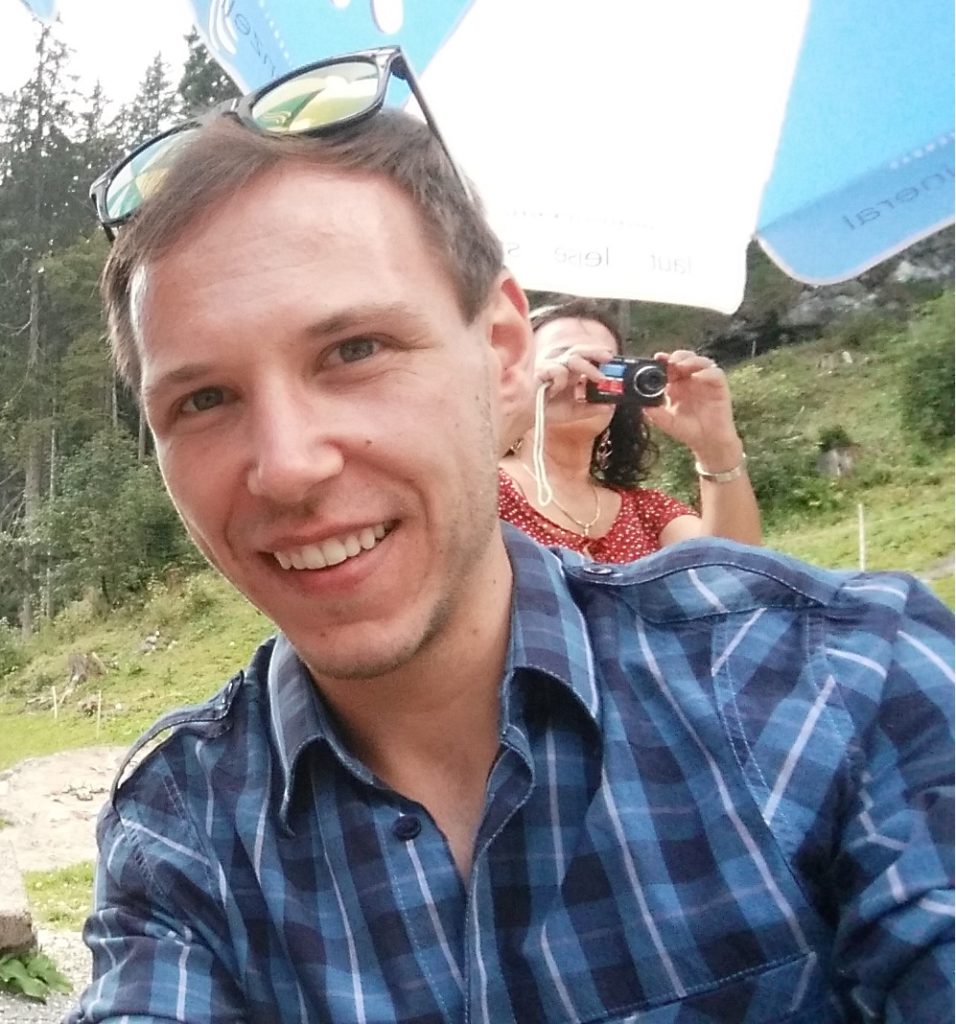

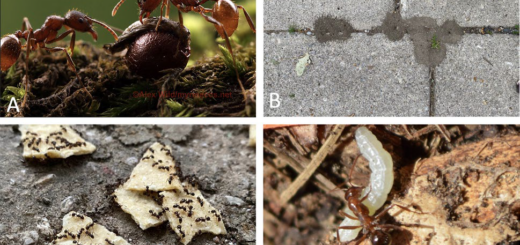
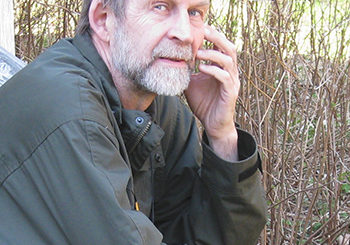
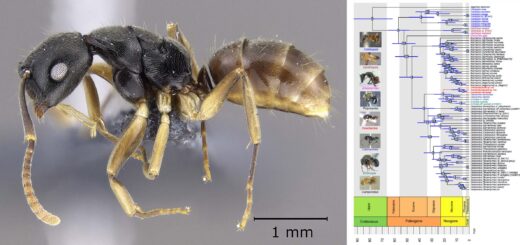
Recent Comments